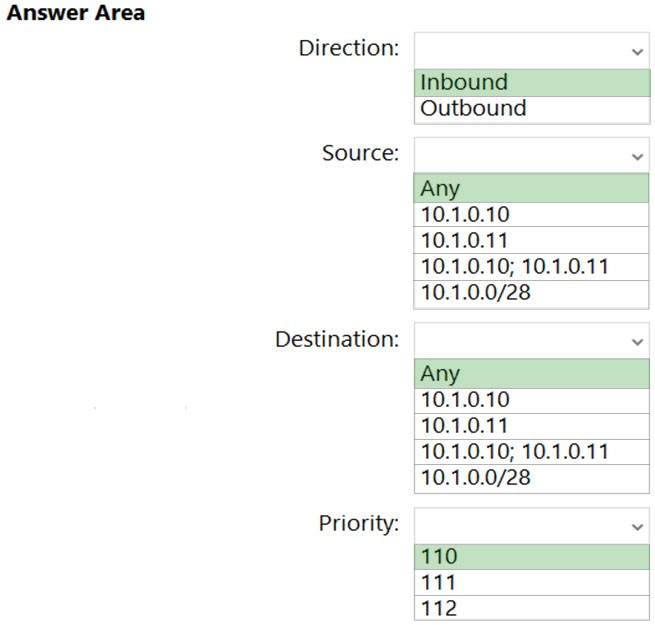

HOTSPOT -
You have a network security group (NSG) named NSG1 that has the rules defined in the exhibit. (Click the Exhibit tab.)
NSG1 is associated to a subnet named Subnet1. Subnet1 contains the virtual machines shown in the following table.
You need to add a rule to NSG1 to ensure that VM1 can ping VM2. The solution must use the principle of least privilege.
How should you configure the rule? To answer, select the appropriate options in the answer area.
NOTE: Each correct selection is worth one point.
Hot Area:

speed2fast
Highly Voted 3 years, 5 months agoFananico
3 years, 4 months agomichaelmorar
2 years, 10 months agotheOldOne
3 years, 5 months agodc2k79
2 years, 4 months agonsknexus478
3 years, 4 months agoawssecuritynewbie
2 years, 5 months agoSilverFox22
3 years, 5 months agonsknexus478
3 years, 5 months agoQuantigo
Highly Voted 3 years, 5 months agotheOldOne
3 years, 5 months agoyolap31172
3 years agonaveedpk00
11 months, 4 weeks agoFlaShhh
1 year ago[Removed]
Most Recent 5 months, 1 week agotashakori
11 months, 2 weeks agoLovelyGroovey
1 year ago2d153f5
3 months agornd3131
1 year, 1 month agoJosete1106
1 year, 7 months agoJzx
1 year, 11 months agotech07
1 year, 8 months agoAndrew04
1 year, 11 months agovbohr899
2 years agoZeppoonstream
2 years, 2 months agoZeppoonstream
2 years, 1 month agoArchie1206
2 years, 4 months agoklexams
2 years, 4 months agoklexams
2 years, 4 months agopkkalra
2 years, 5 months agoZacAz104
2 years, 5 months agoEmnCours
2 years, 5 months ago